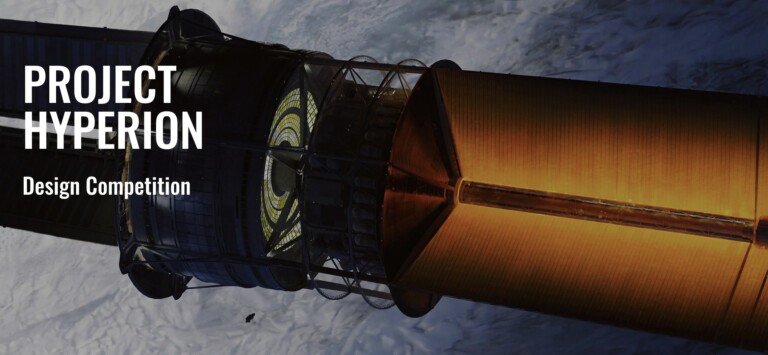Interstellar Generation Ship Propulsion Technology by 2050 | NextBigFuture.com
There have been some laboratory experiments and theoretical work done to validate aspects of the plasma magnet propulsion concept. The Plasma Magnet is a wind drag device invented almost twenty years ago by Dr. John Slough from the University of Washington. A rocket that uses a propellant to create momentum. A plasma magnet (newer /
Wind Rider design) uses the pressure of the solar wind to gather momentum. This type of propulsion actually exists in nature. A dandelion coasts upon the wind to its ultimate destination.
The plasma magnet drive with dynamic soaring is a system that could be plausibly scaled for human crewed missions up to 2-3% of light speed without needing gigawatt power systems. It seems one of the systems with the fewest technological challenges. There are many other proposals to get to this speed.
Solar sails that fly very close to the sun and laser pushed sails would work as well. However, making laser pushed sails that were big enough to carry a human crew would rapidly increase the power systems required into the the tens of gigawatts and even terawatts of power.
Increasing the size of plasma magnet drive ship would reduce the acceleration. However, the system could take more trips around the sun to build up speed. This is described below where dynamic soaring is used to get up to ten times the speed of the solar wind.
Jeff Greason has proposals to go beyond dynamic soaring plasma magnet systems to reach 25% of the speed of light. Those proposals are in other articles at Nextbigfuture here and here.
The solar wind is a stream of rapidly moving charged particles. This high-energy stream can vary in speeds from 450 kilometers per second up to 800 kilometers per second, depending on the angle.
Plasma sail propulsion based on the plasma magnet is a unique system that taps the ambient energy of the solar wind with minimal energy and mass requirements.
The drive itself consists of a pair of polyphase coils mounted at or near the center of a cylindrical craft that once energized produce a rotating magnetic field. New designs use superconducting coils and wire.
A magnetic field powers currents that generate a huge shell of plasma to surround the spacecraft, potentially reaching tens of kilometers in size. This shell of magnetically driven plasma expands outward in a disc-like shape until its size is equalized by the pressure of the solar wind and then uses the principle of drag to essentially surf the solar wind like the dandelion on its summer breeze.
Dynamic soaring enables speeds ten times or more than the wind speed. You dive in and out of the differences in wind speed. Diving in and out of the solar wind would enable speeds 10 times the speed of the solar wind. 6900 kilometers per second would be 2.3% of the speed of light.
Dynamic soaring has been proven with the flight of pelicans and sea gulls. Higher speeds have been shown using drones.
A full proof-of-concept demonstrations in space for plasma magnets has not yet been done.
Here’s a summary of the key evidence and validation efforts so far:
1. Vacuum Chamber Tests: Experiments were conducted in a vacuum chamber using a simulated solar wind source to test the plasma magnet concept. These tests demonstrated:
– Efficient deflection of plasma by the magnetic field, with up to 100% deflection at higher field strengths.
– The ability to produce a high-beta plasma within a dipole magnetic field.
– Absorption of energy from the external plasma wind to sustain higher plasma energy densities.
– Contraction and expansion of the plasma magnet in response to changes in plasma flow.
2. Thrust Measurements: A fiber optic position sensor was used to detect thrust imparted to the antenna from deflection of the simulated solar wind plasma. The experiments showed:
– A large displacement attributable to the deflection of the solar wind simulator by the plasma current generated magnetic fields
– An average thrust of about 1.25 N during a 200 μs pulse, with a thrust power of 0.6 MW.
Theoretical Work and Simulations
1. MHD Simulations: Magnetohydrodynamic (MHD) simulations have been conducted to model the behavior of the plasma magnet. These simulations helped justify the separation of plasma source-controlled and solar wind-controlled regions of the magnetic bubble.
2. Hybrid Simulations: Hybrid simulations were used to study the momentum transfer to the innermost regions of the plasma sail, showing forces roughly perpendicular to the solar wind flow.
Need to prove large plasma bubbles and fly in space
1. Scale: The laboratory experiments were conducted at a much smaller scale than would be required for actual space propulsion.
2. Magnetic Field Falloff: There has been debate and research regarding the rate at which the magnetic field falls off, which significantly affects performance prediction.
3. Energy Extraction Efficiency: The efficiency of energy extraction from the plasma medium remains a challenge, with concerns that it may be too low if similar to vertical axis wind turbines.
Proposed Tests
1. In-Space Demonstration: A technology demonstration in space has been proposed as the next logical step. For example, the Jupiter Observing Velocity Experiment (JOVE), a 16U cubesat demonstrator concept, has been suggested to test the technology.
2. Gradual Validation: Jeff Greason has emphasized the need for experimental validation in stages, starting with demonstrating significant drag against the solar wind using a magnetic structure for propulsion
While these experiments and simulations provide promising initial results, they do not yet constitute full proof that the plasma magnet propulsion system would work as proposed in space. Further in-space testing and validation are needed to fully demonstrate the concept’s viability for spacecraft propulsion.
Citations:
[1] https://thedebrief.org/this-new-deep-space-propulsion-system-rides-like-a-leaf-on-the-solar-wind/
[2] https://science.gsfc.nasa.gov/673/staff/bios/cs/KhazanovGV/AIAA-3737-130.pdf
[3] https://www.centauri-dreams.org/2020/03/27/introducing-the-q-drive-a-concept-that-offers-the-possibility-of-interstellar-flight/
[4] https://www.smithsonianmag.com/air-space-magazine/fate-of-the-lynx-180967118/
[7] https://www.centauri-dreams.org/2017/12/29/the-plasma-magnet-drive-a-simple-cheap-drive-for-the-solar-system-and-beyond/
[8]
[9] https://en.wikipedia.org/wiki/Magnetic_sail
[10]
Brian Wang is a Futurist Thought Leader and a popular Science blogger with 1 million readers per month. His blog Nextbigfuture.com is ranked #1 Science News Blog. It covers many disruptive technology and trends including Space, Robotics, Artificial Intelligence, Medicine, Anti-aging Biotechnology, and Nanotechnology.
Known for identifying cutting edge technologies, he is currently a Co-Founder of a startup and fundraiser for high potential early-stage companies. He is the Head of Research for Allocations for deep technology investments and an Angel Investor at Space Angels.
A frequent speaker at corporations, he has been a TEDx speaker, a Singularity University speaker and guest at numerous interviews for radio and podcasts. He is open to public speaking and advising engagements.
Information contained on this page is provided by an independent third-party content provider. This website makes no warranties or representations in connection therewith. If you are affiliated with this page and would like it removed please contact editor @riverton.business






